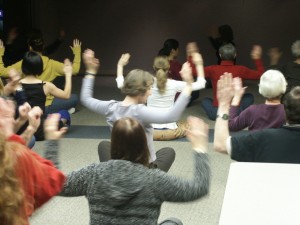What is the difference between software implementation and software development? They sound like two very different things, don’t they? However, it depends on the nature of the software involved. Since February 2010, I have been working as the technical writer on a team for a Vancouver-based financial institution that is implementing Temenos T24 software. My role has involved developing customized online help to go with each screen of the software.
You might wonder why this is necessary. The reason is that Temenos is not an “out of the box” solution, like Microsoft Word, that is ready to go the minute you buy it. Though for those of us who have upgraded through various releases of Word, it is not really ready to go, as we have favourite ways of setting up the program to work for us. Come to think of it, the more expert a user is, the more they are likely to customize aspects of a software package before starting to use it. But I digress!
Used by over 600 banks world-wide, the Temenos T24 software is a very robust package that is customizable for each financial institution’s unique needs. The implications of this might not be obvious at first, but the software is actually intended to be developed further once it is purchased by a client. The documentation that comes with the Temenos T24 software is not intended for end users in banks and credit unions, such as front-line staff and people working in the back office to complete the behind-the-scenes aspects of banking. The Temenos T24 documentation is very comprehensive, but its intended audience is the implementation team of software developers, business analysts, and others who need to understand the nuts and bolts of the software’s structure of tables, applications, and modules. Using this knowledge, the implementation team must develop their own databases and screens for use with their company’s existing member structure, products, and processes.
Thus, the implementation team becomes a development team. Once development is involved, it necessitates an entirely different set of skills than implementation. Coding, testing, designing user interfaces, creating business requirements (if you don’t have them already! 😥 ) and functional specifications, and creating end user documentation. And that’s where I come in. To the best of my knowledge, I was the first technical writer in Vancouver with experience developing end user documentation for the Temenos T24 software. [Later update: I have assisted 2 companies with their T24 implementation and consulted with a third to provide advice about supporting banking software users with appropriate documentation. I also assisted with user interface design on several implementations.] If your company is undergoing a Temenos implementation, I would be happy to assist you with creating online help and quick reference materials that are suited to your banking processes. The key to a successful implementation is ensuring that everyone knows how to use the new software! I can help you do that.


